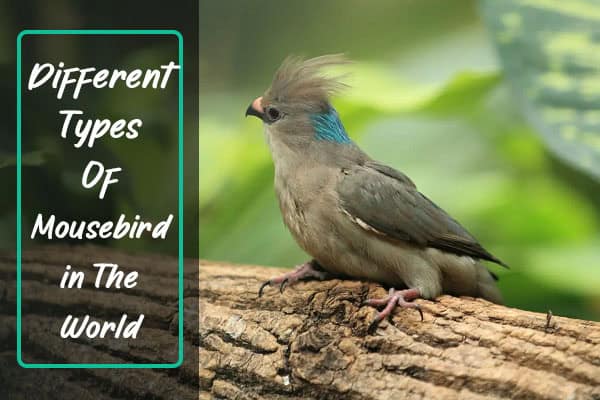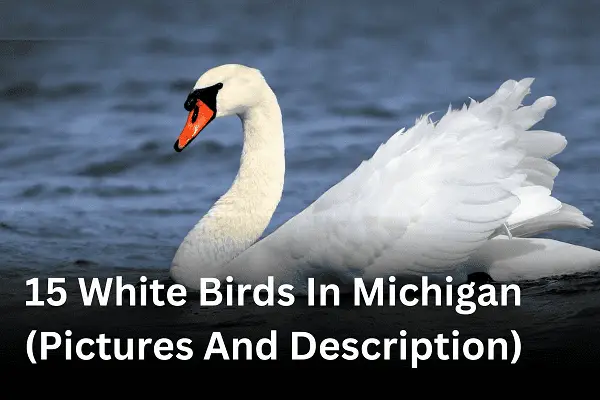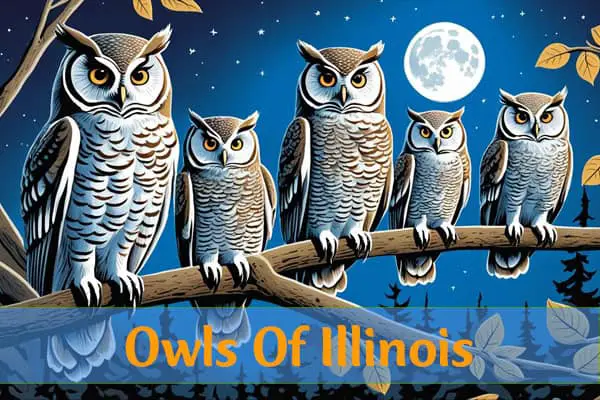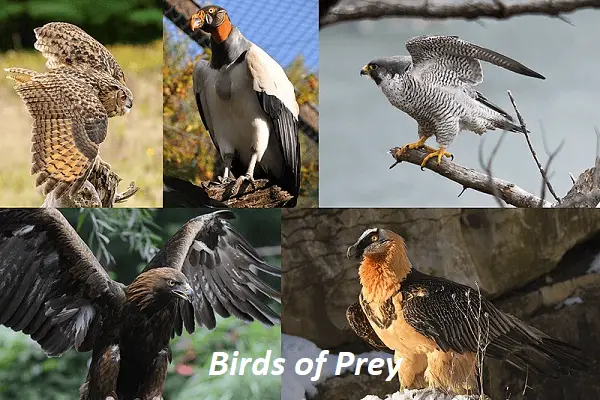Discover Mousebirds: Africa’s Unique Tree-Dwelling Birds
Get ready for an exciting journey into the world of mousebirds. These birds live only in Africa and are part of the genus Colius and Urocolius. They are experts at living in trees, moving through the savannas and woodlands with ease.
Mousebirds look a bit like mice and behave in ways that make them interesting to bird lovers and scientists. They have special ways of living, and building nests, and come in many different types. You’ll find their stories both fascinating and unique.
This article will show you the beauty of mousebirds, from the bright red-backed to the stunning blue-naped and red-faced ones. You’ll learn about the genus Colius and Urocolius and how mousebirds have adapted to life in Africa. Get ready to be amazed by their incredible abilities.
What are Mousebirds?
Mousebirds are a special group of birds found only in Africa. They look a bit like mice but are birds. These small creatures have some amazing traits that make them stand out. Bird lovers and nature experts find them very interesting.
Introducing Mousebirds: Nature’s Avian Architects
Mousebirds belong to the genus Colius and the genus Urocolius. They are known for their unique adaptations. They have long tails and move like mice. This lets them live in the thick forests and grasslands of Africa.
Unique Characteristics and Behaviors
Mousebirds have long, thin toes and sharp claws. These help them stick to tree trunks and branches. Their long tails help them balance while moving. They can also turn their feet to perch and climb in any direction.
- Mousebirds like to live and work together in small groups.
- They eat mostly fruits, berries, and leaves, picking them from trees with skill.
- They make different sounds to talk to each other, from soft chirps to loud chattering.
Mousebirds are truly special birds with interesting traits and behaviors. Exploring their world shows us the amazing things nature can create.
1. Genus Colius
Exploring the world of the genus Colius, we find a group of birds that really stand out. They are part of the diverse bird life in Africa. Each mousebird species in this genus has its own unique traits and behaviors. These traits make them fascinating for nature lovers and birdwatchers.
1.1 Red-backed Mousebird (Colius castanotus)
The red-backed mousebird is a sight to see. It has a reddish-brown back and wings. Its long, slender tail and quick movements make it memorable.
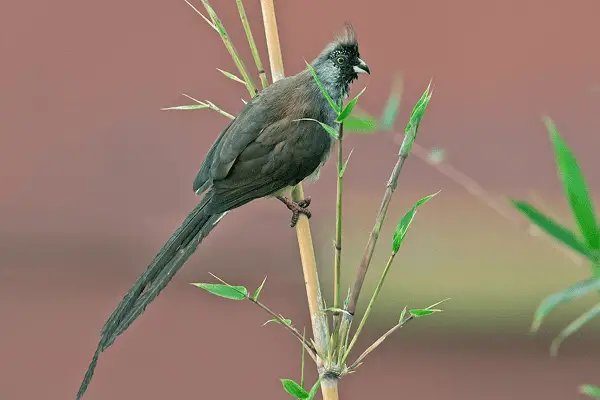
These birds like to be with others, often foraging and perching in groups. They eat fruits, berries, and leaves, using their sharp beaks. The red-backed mousebird lives in many places, from savannas to woodlands, across Africa.
1.2 Speckled Mousebird (Colius striatus)
The speckled mousebird is known for its speckled feathers, a mix of browns, grays, and white. It moves easily through dense foliage and branches. This bird is a pro at living in its environment.
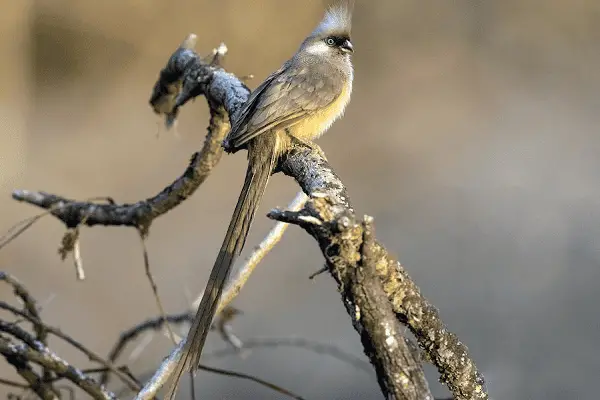
Like the red-backed mousebird, the speckled mousebird likes to be with others. They form strong family bonds, working together to build nests and care for their young. This species is found in many places, from savannas to suburban gardens, in sub-Saharan Africa.
| Species | Plumage | Habitat | Diet |
|---|---|---|---|
| Red-backed Mousebird (Colius castanotus) | Reddish-brown back and wings | Savannas, woodlands | Fruits, berries, leaves |
| Speckled Mousebird (Colius striatus) | Speckled plumage of browns, grays, and white | Savannas, suburban gardens | Fruits, berries, leaves |
“The genus Colius is a true gem of the African avifauna, showcasing the remarkable diversity and adaptability of the mousebird species.”
1.3 White-backed Mousebird (Colius colius)
The White-backed Mousebird is a small bird with gray on top, a white back, and a gray crest and chest. It also has a dark face mask, a silvery bill with a black tip, a dark tail, a buff-colored belly, reddish legs, and dark eyes.
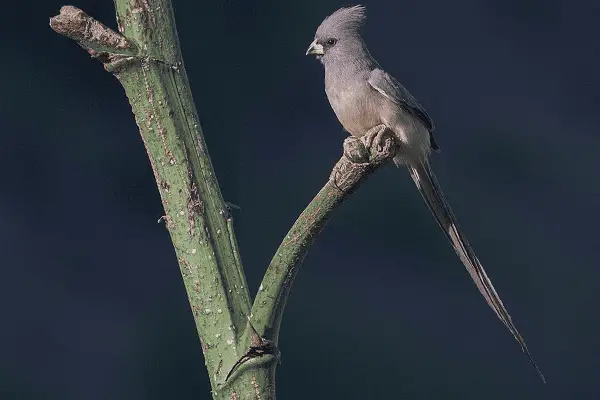
When it comes to size, these birds are about 11.4 to 12.6 inches (29 to 32 cm) long and weigh between 1.1 to 2.1 ounces (31 to 59 grams).
They live in various places like farmlands, coastal shrublands, fynbos (a type of vegetation in South Africa), and other semi-desert areas. You can find them in South Africa, Namibia, and Botswana.
Their common call sounds like “cheee-wee-wee-wiit.”
The population of White-backed Mousebirds is growing and doing well, so they are not considered at risk of extinction.
Mousebirds and Their Intricate Nest Structures
Mousebirds are known for their amazing nest-building skills. They are like avian architects. They make elaborate, domed nests with different materials. These nests are both beautiful and useful.
Building a mousebird nest is a big engineering task. They use twigs, grasses, and other plants to make a strong, dome-shaped nest. They pick each material carefully to make sure the nest lasts a long time.
The nests of mousebirds have many uses. They keep the birds and their babies safe and protect them from the weather. The nest’s shape and special entrances help control the temperature and humidity inside. This makes a cozy home for the birds.
Mousebirds of different species build their nests in different ways. They all aim to make a strong, domed nest. But, they choose different materials and methods. Some use flexible grasses, while others prefer strong twigs and branches.
No matter the method, the nests are always impressive. They show how clever and adaptable mousebirds are. These nests are a natural wonder, proving what birds can do with teamwork and creativity.
Check Our Previous Articles:
2. Genus Urocolius
The genus Urocolius is a special part of the mousebird world. It includes the blue-naped and red-faced mousebirds. These birds share some traits with other mousebirds but also have their own special features and behaviors.
2.1 Blue-naped Mousebird (Urocolius macrourus)
The blue-naped mousebird, known as Urocolius macrourus, is a beautiful bird. It has a bright blue nape that makes it stand out. Its colors range from olive-gray to chestnut, and it has a long, slender tail that it holds up high.
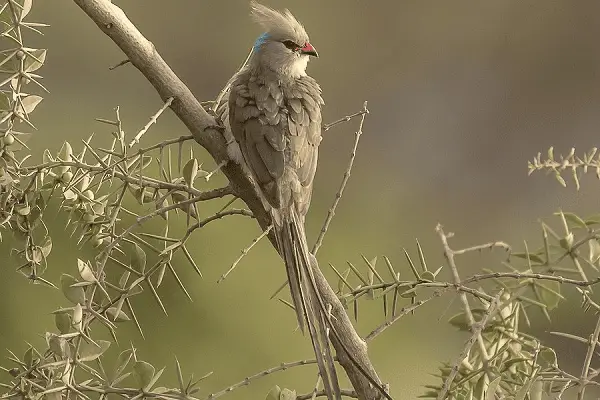
These birds love to be with others and can often be seen in groups. They live in trees in the African savanna and woods. They eat fruits, berries, and plants, using their sharp bills to pick and eat them.
2.2 Red-faced Mousebird (Urocolius indicus)
The red-faced mousebird, or Urocolius indicus, is also a member of the Urocolius genus. It is known for its bright red face and gray body. Its long tail is always held high, adding to its unique look.

These birds live in the savannas and woods of eastern and southern Africa. They eat fruits, berries, and plants. Like the blue-naped mousebirds, they are social and live in groups, showing great skill in the trees.
The blue-naped and red-faced mousebirds are amazing examples of the Urocolius genus. They show how diverse and interesting the mousebird family is.
Frequently Asked Questions:
Q1. Why is it called a mousebird?
It is called a mousebird because it often runs along branches like a mouse.
Q2. What do mousebirds eat?
Mousebirds eat fruits, leaves, and flowers.
Q3. Can mousebirds fly?
Yes, mousebirds can fly.
Q4. Where are mousebirds found?
Mousebirds are found in Africa, particularly in South Africa, Namibia, and Botswana.

